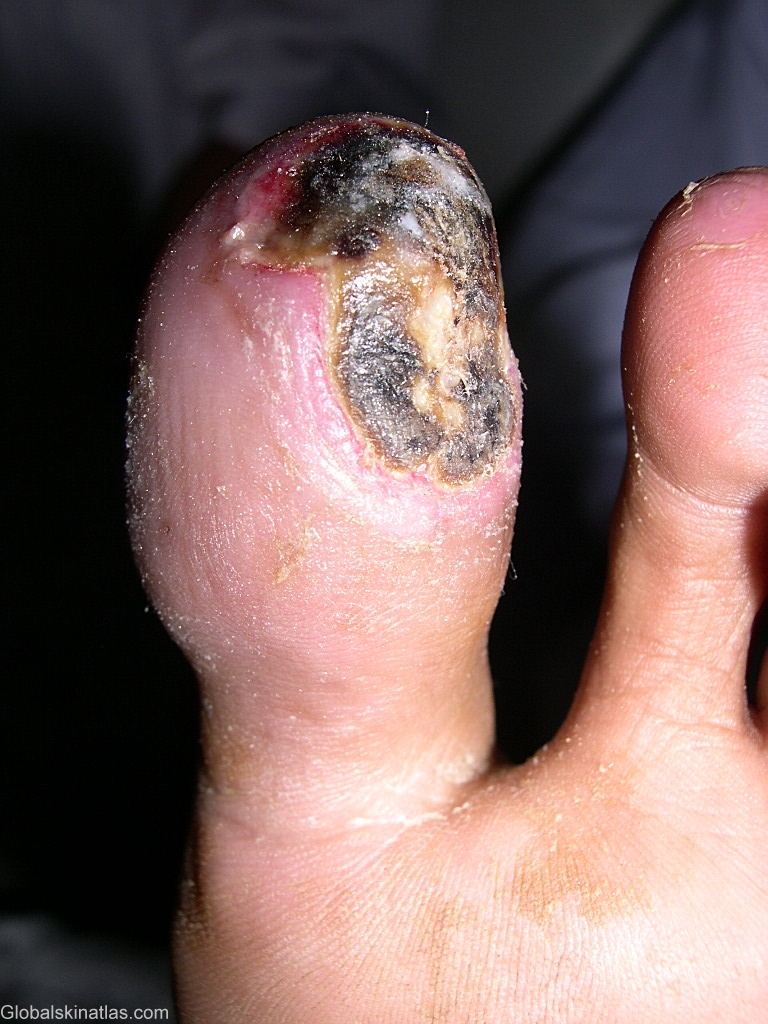

Diagnosis: Buerger disease
Description: Ischemic ulcer and gangrene
Morphology: Ulcer
Site: Toes
Sex: M
Age: 35
Type: Clinical
Submitted By: Shahbaz Janjua
Differential DiagnosisHistory:
Buerger disease, also known as thromboangiitis obliterans, is a very rare disorder that, in most cases, affects young or middle-aged male cigarette smokers. It is characterized by narrowing or occlusion of the small and medium sized veins and arteries of the extremities, resulting in reduced blood flow to these areas. The legs are affected more often than the arms. In most cases, the first symptom is extreme pain of the lower arms and legs while at rest. Affected individuals may also experience cramping in the legs when they walk that, in rare cases, may cause limping (claudication). In addition, affected individuals may have sores (ulcers) on the extremities, numbness and tingling and a lack of normal blood flow to the fingers and/or toes when exposed to cold temperatures (Raynaud's Phenomenon), and/or inflammation and clotting of certain veins (thrombophlebitis). In severe cases, individuals with Buerger's disease may exhibit tissue death (gangrene) of affected limbs. The exact cause of Buerger's disease is not known; however, most affected individuals are heavy tobacco users.
Diagnostic criteria:
- Age younger than 45 years
- Current (or recent) history of tobacco use
- Presence of distal extremity ischemia (indicated by claudication, pain at rest, ischemic ulcers, or gangrene) documented by noninvasive vascular testing
- Exclusion of autoimmune diseases, hypercoagulable states, and diabetes mellitus by laboratory tests
- Exclusion of a proximal source of emboli by echocardiography and arteriography
- Consistent arteriographic findings in the clinically involved and noninvolved limbs.
Except for absolute tobacco avoidance, no forms of therapy are definitive.
